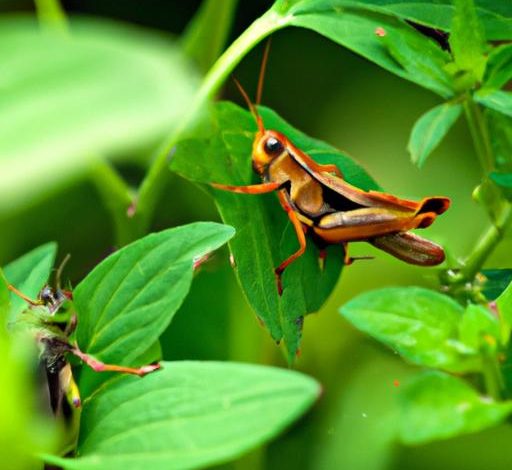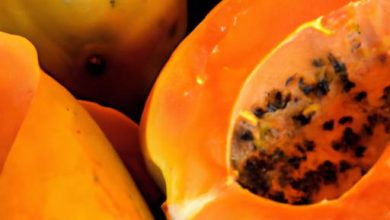Do Grasshoppers Eat Ants: Unveiling the Intriguing Dietary Habits of These Tiny Creatures

Have you ever wondered about the fascinating dietary preferences of grasshoppers and ants? These tiny creatures play a significant role in our ecosystem, and understanding their diets is crucial for comprehending their interactions within nature’s intricate web. In this article, we will explore the captivating world of grasshoppers and ants, focusing on the burning question: “do grasshoppers eat ants?”
A Brief Overview of Grasshoppers and Ants
Grasshoppers are well-known for their ability to leap and their distinct chirping sounds. They are herbivorous insects, primarily consuming plant matter such as leaves, stems, and flowers. These agile creatures thrive in various habitats, from meadows and forests to gardens and agricultural fields.
On the other hand, ants are highly organized social insects that live in colonies. They are known for their remarkable teamwork, constructing intricate underground nests and engaging in complex communication systems. Ants have a diverse diet, with some species being omnivorous and feeding on both plants and animals, while others are strictly herbivorous or carnivorous.
The Importance of Understanding Grasshopper and Ant Diets
Understanding the dietary preferences of grasshoppers and ants is crucial for multiple reasons. Firstly, it provides valuable insights into the ecological balance of their habitats. By studying their diets, scientists can better understand the impact these creatures have on plant life and the overall biodiversity of ecosystems.
Furthermore, comprehending the feeding habits of grasshoppers and ants helps us recognize the role they play in the food chain. These insects serve as essential food sources for numerous predators, including birds, reptiles, and other insects. By examining the interactions between grasshoppers, ants, and their predators, we gain a deeper understanding of the delicate balance within nature.
Introduction to the Main Keyword: “Do Grasshoppers Eat Ants”
Now, let’s delve into the intriguing question that has piqued our curiosity: “Do grasshoppers eat ants?” This query stems from the desire to explore the complexities of nature’s interconnections. Throughout this article, we will examine scientific studies, real-life observations, and various factors that may influence the dietary habits of grasshoppers, ultimately revealing whether or not these fascinating insects indulge in ant consumption.
Stay tuned as we embark on an enthralling journey into the world of grasshoppers and ants, uncovering the truth behind their dietary choices.
Grasshopper Diet
A. Description of Grasshopper Feeding Habits
Grasshoppers are known for their voracious appetites and unique feeding habits. With their specialized mouthparts designed for chewing, they primarily consume plant matter. However, their diet extends beyond a mere vegetarian feast. Grasshoppers are classified as herbivorous insects, but their feeding behavior can vary depending on their species and environmental factors.
These fascinating creatures have a preference for fresh, tender plant parts, such as leaves and stems. They use their strong mandibles to tear and chew the vegetation, extracting essential nutrients. Grasshoppers possess a remarkable ability to adapt to their surroundings, adjusting their feeding habits based on the availability of food sources.
B. Primary Food Sources for Grasshoppers
Grasshoppers have a wide range of primary food sources that sustain their energetic lifestyles. Lush green plants, including grasses, clovers, and various leafy vegetation, are often the staple of their diet. These plants provide the necessary carbohydrates and proteins needed for growth and survival.
Moreover, grasshoppers are opportunistic feeders and may also consume agricultural crops, posing a potential threat to farmers. Their indiscriminate feeding can result in crop damage and yield reduction, making them a subject of concern for agricultural communities.
C. Factors Influencing Grasshopper Diet Variations
Various factors influence grasshopper diet variations, leading to a diverse range of feeding behaviors among different species and populations. Environmental conditions play a significant role in determining the availability of food sources. For instance, during periods of drought or scarcity, grasshoppers may resort to consuming less preferable food options or even engage in cannibalism when resources are scarce.
Additionally, grasshopper diet variations can be influenced by factors such as seasonal changes, habitat type, and competition for resources. These factors shape the dietary preferences and adaptability of grasshoppers, allowing them to survive and thrive in different environments.
As we delve deeper into the dietary habits of grasshoppers, we gain insight into the factors that shape their feeding preferences and their impact on the surrounding ecosystem.
Ant Diet
Overview of Ant Feeding Behaviors
Ants exhibit a diverse range of feeding behaviors, showcasing their adaptability to different environments. These remarkable creatures are known for their ability to scavenge, forage, and even cultivate food sources within their colonies. The division of labor within ant colonies ensures efficient collection and distribution of resources, making them successful foragers.
Primary Food Sources for Ants
Ants have a varied diet, depending on their species and ecological niche. While some ants are herbivorous, feeding on nectar, pollen, and sap, others are omnivorous and opportunistic scavengers, consuming both plant matter and small insects. Additionally, certain ant species are known to be predatory, hunting other insects, spiders, or even small vertebrates.
Ants also exhibit a unique relationship with aphids, tiny insects that feed on plant sap. Some ant species cultivate aphids, protecting them from predators and in return, harvesting the honeydew that aphids produce as they feed. This mutually beneficial association highlights the complex interactions between ants and other organisms within the ecosystem.
Importance of Ants in the Ecosystem
Ants play a crucial role in maintaining the balance of ecosystems. As efficient decomposers, they aid in nutrient recycling by consuming dead organisms and organic matter, contributing to the breakdown of complex compounds into simpler forms that can be utilized by other organisms. Their activities also enhance soil aeration and nutrient distribution.
Moreover, ants act as seed dispersers, aiding in the propagation of various plant species. By carrying and burying seeds, they contribute to the regeneration and expansion of plant populations. This dispersal mechanism ensures the diversity and distribution of plant species, influencing the overall structure and composition of ecosystems.
In addition to their ecological significance, ants serve as indicators of environmental health. Changes in ant populations or behaviors can reflect alterations in habitat conditions, making them valuable indicators for monitoring ecosystem disturbances and environmental changes.
Ants truly exemplify the intricate connections between organisms within the ecosystem, showcasing their vital role in maintaining ecological harmony.
Interactions between Grasshoppers and Ants
A. Coexistence of Grasshoppers and Ants in Their Habitats
In the vast realm of nature, it is not uncommon to find grasshoppers and ants coexisting in the same habitats. These seemingly different species often share the same environment, displaying a complex interplay of competition, cooperation, and mutual benefits. Despite their divergent lifestyles and dietary preferences, grasshoppers and ants manage to find a balance that allows them to thrive side by side.
One key factor contributing to their coexistence is habitat diversity. Grasshoppers and ants occupy various niches within their ecosystems, utilizing specific microhabitats and foraging areas. While grasshoppers are often found in open grasslands and meadows, ants establish intricate underground colonies and explore a wide range of environments. This spatial separation allows both species to find the resources they need without directly competing for them.
B. Instances of Grasshoppers and Ants Interacting
Although grasshoppers and ants may have distinct roles within their habitats, their paths occasionally cross, leading to intriguing interactions. One notable example is the defense mechanisms employed by ants to protect their colonies. Some ant species release chemical signals, known as pheromones, to communicate and coordinate their defense against potential threats. When grasshoppers unintentionally stumble upon these pheromone trails, they may trigger the ants’ defensive response, resulting in encounters between the two species.
Additionally, ants are known to scavenge on deceased grasshoppers, feeding on their remains. This interaction highlights the crucial role ants play in recycling nutrients within ecosystems, ensuring a sustainable balance. While this may seem like a one-sided relationship, it emphasizes the interconnectedness of these tiny creatures and their ability to adapt and utilize available resources.
C. Factors Influencing Grasshopper-Ant Interactions
Several factors influence the interactions between grasshoppers and ants. One crucial aspect is the availability of resources. If grasshoppers and ants compete for limited food sources, it may lead to heightened conflict and aggression. However, when resources are abundant, both species can coexist peacefully, utilizing different niches and minimizing direct competition.
Environmental conditions also influence the nature of grasshopper-ant interactions. Factors such as temperature, humidity, and vegetation density can affect the abundance and distribution of both species. For instance, in warmer climates, grasshopper populations may increase, leading to heightened interactions with ants.
Understanding the intricacies of grasshopper-ant interactions provides valuable insights into the dynamics of ecosystems. By examining these interactions, researchers can gain a deeper understanding of the delicate balance between different species and their impact on the overall ecosystem’s stability.
Join me in the next section as we delve into the burning question: “Do grasshoppers eat ants?” We will explore scientific studies and real-life observations to uncover the truth.
Do Grasshoppers Eat Ants?
A. Scientific Studies on Grasshopper Dietary Preferences
To unravel the mystery of whether grasshoppers indulge in ant consumption, scientists have conducted extensive studies to shed light on their dietary preferences. These studies provide valuable insights into the feeding habits of grasshoppers and their potential inclination towards consuming ants.
Researchers have observed grasshoppers in their natural habitats and conducted controlled experiments to determine their dietary choices. Through careful observation and analysis, these studies have revealed that grasshoppers primarily feed on plant matter. Their diet consists of various plant parts, including leaves, stems, flowers, and seeds. However, these studies have also shown that grasshoppers are opportunistic feeders and may occasionally consume other insects, including ants.
B. Instances of Grasshoppers Consuming Ants
While scientific studies provide valuable information, real-life observations offer a glimpse into the actual interactions between grasshoppers and ants. There have been documented instances where grasshoppers have been observed consuming ants, albeit infrequently. These observations suggest that grasshoppers may occasionally include ants in their diet, but it is not a common occurrence.
It is important to note that the consumption of ants by grasshoppers may vary depending on several factors. These factors include the availability of alternative food sources, the abundance of ants in the grasshopper’s environment, and individual grasshopper preferences. While grasshoppers are primarily herbivorous, certain circumstances may lead them to opportunistically feed on ants when other food sources are scarce.
C. Factors Influencing Grasshopper Consumption of Ants
Several factors influence the likelihood of grasshoppers consuming ants. One of the primary factors is the availability of alternative food sources. Grasshoppers prefer plant matter and will primarily feed on it if it is abundant. However, when faced with limited plant resources, grasshoppers may resort to consuming ants and other insects.
Another factor is the abundance of ants in the grasshopper’s environment. If ants are prevalent in the grasshopper’s habitat, they may come into contact more frequently, increasing the chances of grasshoppers consuming ants. Additionally, individual grasshopper preferences and even physiological factors may play a role in determining whether a particular grasshopper would choose to eat ants.
While grasshoppers are not known for their regular consumption of ants, the occasional instances of ant consumption suggest that it is not entirely uncommon. However, further research is needed to fully understand the intricacies of grasshopper-ant interactions and the factors that influence their dietary choices.
Continue reading as we move forward in our quest to unravel the captivating world of grasshoppers and ants, exploring their interactions and shedding light on their coexistence.
Conclusion
After a thorough exploration of the dietary habits of grasshoppers and ants, we can now draw insightful conclusions regarding the burning question: “Do grasshoppers eat ants?”
Through scientific studies and real-life observations, it is evident that grasshoppers do consume ants, albeit under specific circumstances. While grasshoppers are primarily herbivorous, there are instances where they exhibit omnivorous behavior, including feeding on ants. However, it is important to note that such occurrences are not widespread and may vary depending on environmental factors and individual grasshopper species.
The coexistence of grasshoppers and ants in their habitats indicates the potential for interactions between these two insect groups. While grasshoppers may occasionally prey on ants, it is not a significant part of their diet. Ants, on the other hand, have well-defined feeding behaviors and play crucial roles in maintaining ecosystem balance.
In conclusion, while grasshoppers may occasionally eat ants, it is not a widespread phenomenon. Their main diet consists of plant matter, and ants are not a primary food source for them. Nevertheless, further research is necessary to fully comprehend the intricacies of grasshopper-ant interactions and the factors influencing their dietary choices.
As we unravel the mysteries of nature, it becomes evident that every creature has a unique role to play. Grasshoppers and ants, with their diverse diets and interactions, contribute to the delicate balance of our ecosystems. By understanding their dietary habits, we gain a deeper appreciation for the intricate web of life that surrounds us.
Thank you for joining me on this captivating journey into the world of grasshoppers and ants. To continue exploring the wonders of nature, visit vegetable.kenhtech.com, where you’ll find a wealth of knowledge on various topics related to the fascinating realm of plants and insects.
Keep exploring, keep learning, and let nature’s wonders inspire us all!
Conclusion: So above is the Do Grasshoppers Eat Ants: Unveiling the Intriguing Dietary Habits of These Tiny Creatures article. Hopefully with this article you can help you in life, always follow and read our good articles on the website: vegetable.kenhtech.com



